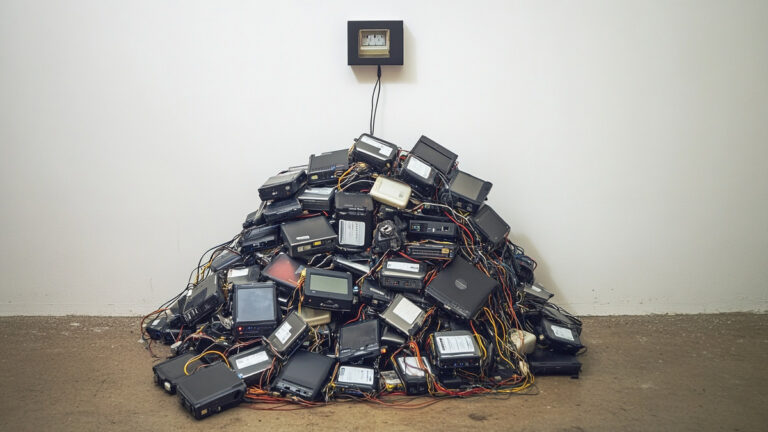In a world where innovation and sustainability often intersect, one individual has taken a creative approach to solving energy challenges. By harnessing the power of discarded technology, he has found an ingenious way to generate off-grid electricity for his home. Since 2016, this resourceful individual has been using over 650 old laptop batteries to power his house, transforming what many consider waste into an endless source of energy.
His unconventional solution highlights the potential of repurposing outdated technology, and in a time when energy independence is increasingly sought after, his story may inspire others to rethink how we view discarded electronics.
The Beginnings of an Ambitious Project
The idea for this innovative energy system began in November 2016, when this individual decided to take matters into his own hands. Initially, he had been relying on solar panels to generate some of his electricity, but he wanted to take it a step further. Armed with an old forklift battery, charge controllers, and an inverter, he began collecting laptop batteries—discarded by others but brimming with potential.
At the heart of his system lies a shed about fifty meters away from his house, which acts as the main hub. Inside, he combined the laptop batteries with the solar panels to create a sustainable energy system completely independent of the traditional power grid. Although this approach might seem unusual, it has worked flawlessly for nearly a decade. Remarkably, he has faced no significant issues with battery fires or swelling, which speaks to the robustness of his design.
The initial collection included 650 batteries, which were used to build battery packs with about 100Ah each. To ensure optimal efficiency, he chose to use copper wires for connections, a decision that contributed significantly to the longevity and durability of his setup.

Overcoming Technical Challenges
Like any ambitious project, the beginning was not without its difficulties. One of the primary challenges was the uneven discharge rates between the different batteries. To overcome this, he needed to balance the batteries and, when necessary, add extra cells to maintain the system’s efficiency. Rather than using full batteries, he disassembled the individual cells and organized them into custom racks, which allowed him to maximize the energy storage potential and improve the lifespan of his system.
As time went on, the system evolved further. The installation grew to include 24 solar panels, each with a 440W capacity, boosting the energy production. With these improvements, the system has run continuously since 2016 without interruption. The fact that no battery cells have needed replacing speaks volumes about the reliability and durability of this off-grid setup.
The Larger Implications of Energy Independence
This project is not just a personal success story—it offers a glimpse into what could be the future of energy autonomy. It challenges the way we think about energy consumption and how we might embrace innovative solutions to address environmental and economic challenges. As more people seek alternatives to traditional energy sources, this individual’s initiative could inspire others to experiment with similarly unconventional approaches.
His project also demonstrates the immense potential of reusing electronic waste, turning outdated and discarded technology into valuable resources. At a time when environmental concerns are at the forefront of global discussions, his work highlights how sustainability and innovation can come together to offer practical solutions.
A Model for the Future
Looking ahead, this energy system could have broader implications for communities and individuals seeking to reduce their reliance on the grid. By repurposing batteries and combining them with renewable energy sources, it’s possible to create a sustainable model that not only reduces waste but also contributes to the global transition towards clean energy.
This project serves as a powerful reminder that even small-scale innovations can have a significant impact. It’s not just about using what’s available, but about thinking creatively and embracing new possibilities. With the ongoing push for energy independence and sustainability, projects like this one offer valuable insights into how we can repurpose existing technology in a way that benefits both the environment and our daily lives.
By blending technology, sustainability, and ingenuity, this individual’s journey offers an inspiring example of how one person’s determination can make a real difference. And as we move toward a more energy-conscious future, stories like these will continue to inspire others to embrace the possibilities of self-sufficiency and sustainable living.






